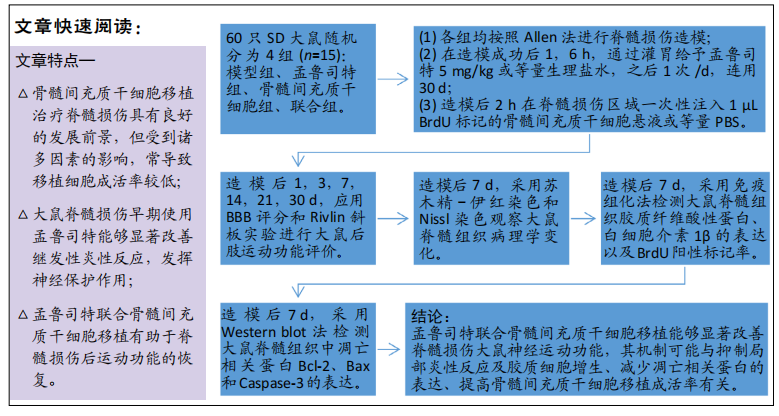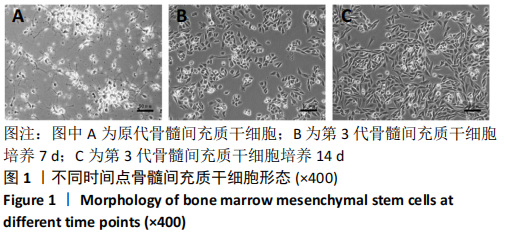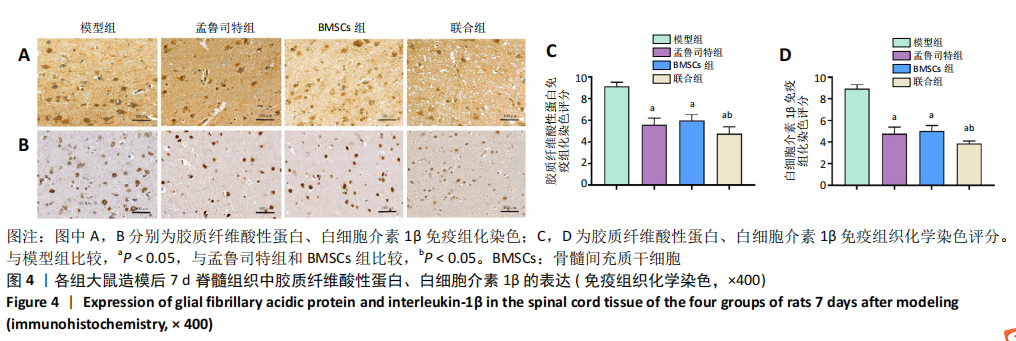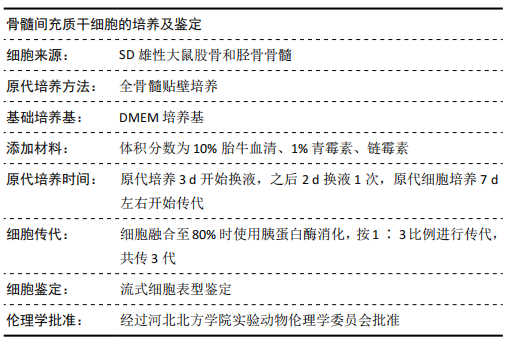[1] QU S, MENG HL, LIANG ZG, et al. Comparison of Short-Course Radiotherapy Versus Long-Course Radiotherapy for Treatment of Metastatic Spinal Cord Compression: A Systematic Review and Meta-Analysis. Medicine (Baltimore). 2015;94(43):e1843.
[2] LI Z, CHEN L, LI B, et al. Efficacy and Safety of Surgical Interventions for Treating Multilevel Cervical Spondylotic Myelopathy via Anterior Approach: A Network Meta-Analysis. Pain Physician. 2019;22(4): E275-E286.
[3] MA JK, WEST CR, MARTIN GINIS KA. The Effects of a Patient and Provider Co-Developed, Behavioral Physical Activity Intervention on Physical Activity, Psychosocial Predictors, and Fitness in Individuals with Spinal Cord Injury: A Randomized Controlled Trial. Sports Med. 2019;49(7):1117-1131.
[4] SHENDE P, SUBEDI M. Pathophysiology, mechanisms and applications of mesenchymal stem cells for the treatment of spinal cord injury. Biomed Pharmacother. 2017;91:693-706.
[5] YAGURA K, OHTAKI H, TSUMURAYA T, et al. The enhancement of CCL2 and CCL5 by human bone marrow-derived mesenchymal stem/stromal cells might contribute to inflammatory suppression and axonal extension after spinal cord injury. PLoS One. 2020;15(3):e0230080.
[6] LIU W, WANG Y, GONG F, et al. Exosomes Derived from Bone Mesenchymal Stem Cells Repair Traumatic Spinal Cord Injury by Suppressing the Activation of A1 Neurotoxic Reactive Astrocytes. J Neurotrauma. 2019;36(3):469-484.
[7] SATTI HS, WAHEED A, AHMED P, et al. Autologous mesenchymal stromal cell transplantation for spinal cord injury: A Phase I pilot study. Cytotherapy. 2016;18(4):518-522.
[8] KORKMAZ K, GEDIK HS, BUDAK AB, et al. Effect of Montelukast on Spinal Cord Ischemia- Reperfusion Injury. Turk Neurosurg. 2015;25(5): 757-765.
[9] GELOSA P, BONFANTI E, CASTIGLIONI L, et al. Improvement of fiber connectivity and functional recovery after stroke by montelukast, an available and safe anti-asthmatic drug. Pharmacol Res. 2019;142: 223-236.
[10] CAVUS G, ALTAS M, ARAS M, et al. Effects of montelukast and methylprednisolone on experimental spinal cord injury in rats. Eur Rev Med Pharmacol Sci. 2014;18(12):1770-1777.
[11] COURTINE G, SOFRONIEW MV. Spinal cord repair: advances in biology and technology. Nat Med. 2019;25(6):898-908.
[12] ORR MB, GENSEL JC. Spinal Cord Injury Scarring and Inflammation: Therapies Targeting Glial and Inflammatory Responses. Neurotherapeutics. 2018;15(3):541-553.
[13] GAUDET AD, FONKEN LK. Glial Cells Shape Pathology and Repair After Spinal Cord Injury. Neurotherapeutics. 2018;15(3):554-577.
[14] LIN L, LIN H, BAI S, et al. Bone marrow mesenchymal stem cells (BMSCs) improved functional recovery of spinal cord injury partly by promoting axonal regeneration. Neurochem Int. 2018;115:80-84.
[15] LI D, ZHANG P, YAO X, et al. Exosomes Derived From miR-133b-Modified Mesenchymal Stem Cells Promote Recovery After Spinal Cord Injury. Front Neurosci. 2018;12:845.
[16] LI C, JIAO G, WU W, et al. Exosomes from Bone Marrow Mesenchymal Stem Cells Inhibit Neuronal Apoptosis and Promote Motor Function Recovery via the Wnt/β-catenin Signaling Pathway. Cell Transplant. 2019;28(11):1373-1383.
[17] SHAO A, TU S, LU J, et al. Crosstalk between stem cell and spinal cord injury: pathophysiology and treatment strategies. Stem Cell Res Ther. 2019;10(1):238.
[18] HA XQ, YANG B, HOU HJ, et al. Protective effect of rhodioloside and bone marrow mesenchymal stem cells infected with HIF-1-expressing adenovirus on acute spinal cord injury. Neural Regen Res. 2020;15(4):690-696.
[19] MANSOUR RM, AHMED MAE, EL-SAHAR AE, et al. Montelukast attenuates rotenone-induced microglial activation/p38 MAPK expression in rats: Possible role of its antioxidant, anti-inflammatory and antiapoptotic effects. Toxicol Appl Pharmacol. 2018;358:76-85.
[20] DAVID S, ZARRUK JG, GHASEMLOU N. Inflammatory pathways in spinal cord injury. Int Rev Neurobiol. 2012;106:127-152.
[21] HE Z, ZANG H, ZHU L, et al. An anti-inflammatory peptide and brain-derived neurotrophic factor-modified hyaluronan-methylcellulose hydrogel promotes nerve regeneration in rats with spinal cord injury. Int J Nanomedicine. 2019;14:721-732.
[22] LI Z, WU F, XU D, et al. Inhibition of TREM1 reduces inflammation and oxidative stress after spinal cord injury (SCI) associated with HO-1 expressions. Biomed Pharmacother. 2019;109:2014-2021.
[23] CASHA S, RICE T, STIRLING DP, et al. Cerebrospinal Fluid Biomarkers in Human Spinal Cord Injury from a Phase II Minocycline Trial. J Neurotrauma. 2018;35(16):1918-1928.
[24] WANG C, SHI D, SONG X, et al. Calpain inhibitor attenuates ER stress-induced apoptosis in injured spinal cord after bone mesenchymal stem cells transplantation. Neurochem Int. 2016;97:15-25.
[25] LI C, CHEN X, QIAO S, et al. Effects of Wharton’s jelly cells of the human umbilical cord on acute spinal cord injury in rats, and expression of interleukin-1β and nerve growth factor in spinal cord tissues. Artif Cells Nanomed Biotechnol. 2016;44(5):1254-1258.
[26] BRADBURY EJ, BURNSIDE ER. Moving beyond the glial scar for spinal cord repair. Nat Commun. 2019;10(1):3879.
[27] HUANG X, KIM JM, KONG TH, et al. GM-CSF inhibits glial scar formation and shows long-term protective effect after spinal cord injury. J Neurol Sci. 2009;277(1-2):87-97.
[28] DU XJ, CHEN YX, ZHENG ZC, et al. Neural stem cell transplantation inhibits glial cell proliferation and P2X receptor-mediated neuropathic pain in spinal cord injury rats. Neural Regen Res. 2019;14(5):876-885.
[29] LI Z, LIU F, HE X, et al. Exosomes derived from mesenchymal stem cells attenuate inflammation and demyelination of the central nervous system in EAE rats by regulating the polarization of microglia. Int Immunopharmacol. 2019;67:268-280.
[30] OKADA S, HARA M, KOBAYAKAWA K, et al. Astrocyte reactivity and astrogliosis after spinal cord injury. Neurosci Res. 2018;126:39-43.
[31] JAIMES Y, NAALDIJK Y, WENK K, et al. Mesenchymal Stem Cell-Derived Microvesicles Modulate Lipopolysaccharides-Induced Inflammatory Responses to Microglia Cells. Stem Cells. 2017;35(3):812-823.
[32] 杨新明,成垚昱,张振梁,等.甲强龙在骨髓间充质干细胞治疗大鼠脊髓损伤中的作用及对肿瘤坏死因子-α和白细胞介素-1β表达的影响[J].中国医学科学院学报,2017,39(5):615-622.
[33] GAO J, SUN Z, XIAO Z, et al. Dexmedetomidine modulates neuroinflammation and improves outcome via alpha2-adrenergic receptor signaling after rat spinal cord injury. Br J Anaesth. 2019; 123(6):827-838.
[34] KEEFE KM, SHEIKH IS, SMITH GM. Targeting Neurotrophins to Specific Populations of Neurons: NGF, BDNF, and NT-3 and Their Relevance for Treatment of Spinal Cord Injury. Int J Mol Sci. 2017;18(3):548.
[35] GAO K, SHEN Z, YUAN Y, et al. Simvastatin inhibits neural cell apoptosis and promotes locomotor recovery via activation of Wnt/β-catenin signaling pathway after spinal cord injury. J Neurochem. 2016;138(1):139-149.
[36] FU XM, WANG Y, FU WL, et al. The Combination of Adipose-derived Schwann-like Cells and Acellular Nerve Allografts Promotes Sciatic Nerve Regeneration and Repair through the JAK2/STAT3 Signaling Pathway in Rats. Neuroscience. 2019;422:134-145.
[37] 杨拯,邱有波,包旭,等.孟鲁司特对大鼠脊髓损伤保护作用的研究[J].重庆医学,2012,41(31):3291-3294,3297.
[38] HERRMANN JE, IMURA T, SONG B, et al. STAT3 is a critical regulator of astrogliosis and scar formation after spinal cord injury. J Neurosci. 2008;28(28):7231-7243.
[39] TAMURA M, NAKAMURA M, OGAWA Y, et al. Targeted expression of anti-apoptotic protein p35 in oligodendrocytes reduces delayed demyelination and functional impairment after spinal cord injury. Glia. 2005;51(4):312-321.
[40] GENOVESE T, ROSSI A, MAZZON E, et al. Effects of zileuton and montelukast in mouse experimental spinal cord injury. Br J Pharmacol. 2008;153(3):568-582.
[41] ZHOU C, SHI X, HUANG H, et al. Montelukast attenuates neuropathic pain through inhibiting p38 mitogen-activated protein kinase and nuclear factor-kappa B in a rat model of chronic constriction injury. Anesth Analg. 2014;118(5):1090-1096.
[42] VAQUERO J, ZURITA M, RICO MA, et al. Intrathecal administration of autologous mesenchymal stromal cells for spinal cord injury: Safety and efficacy of the 100/3 guideline. Cytotherapy. 2018;20(6):806-819. |









